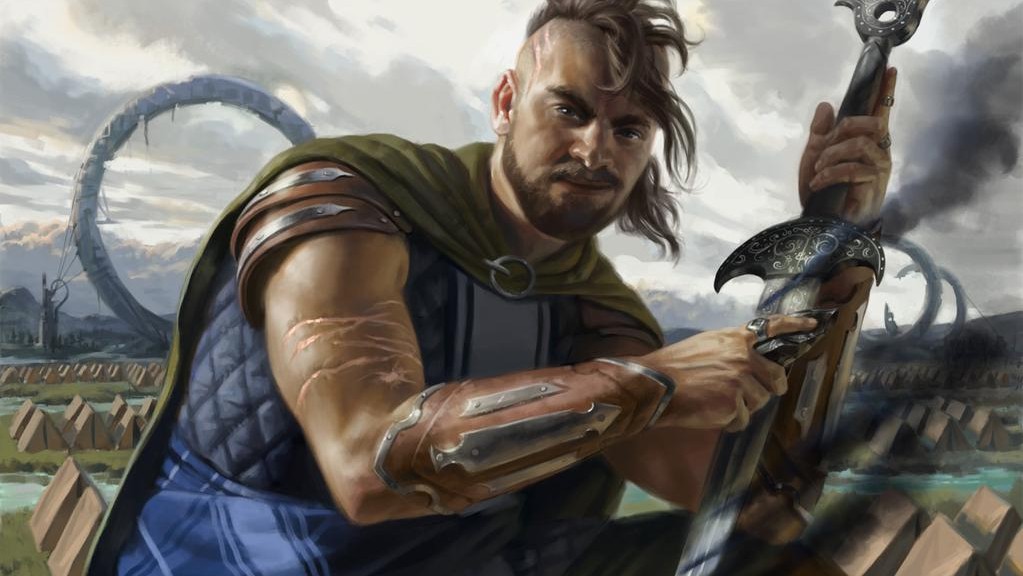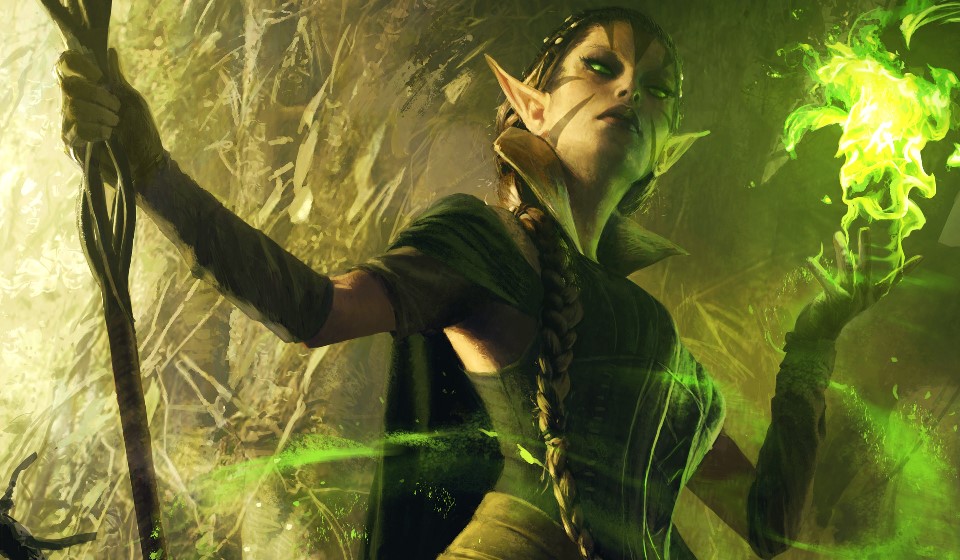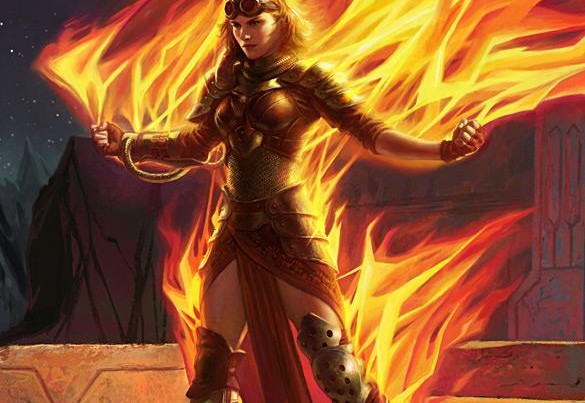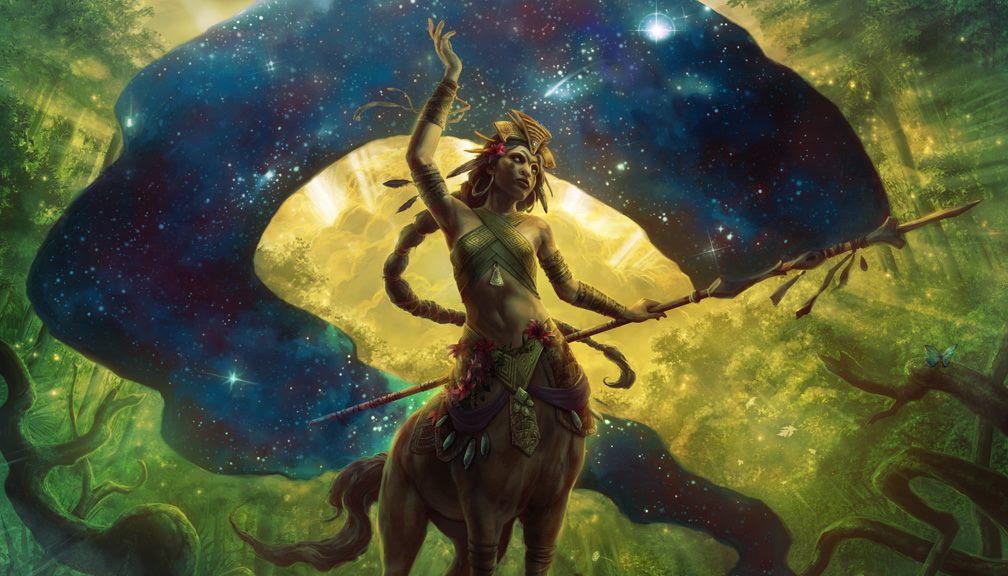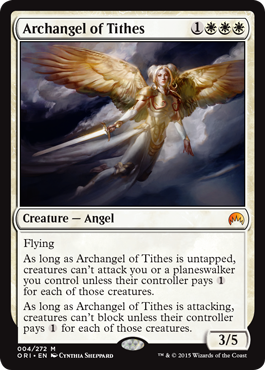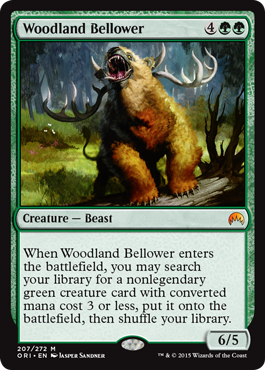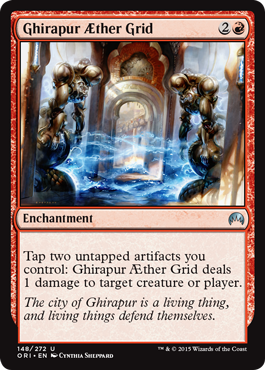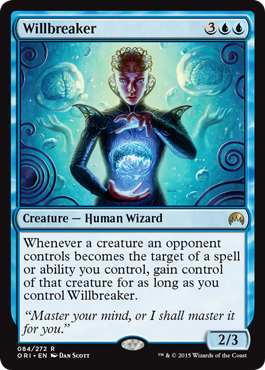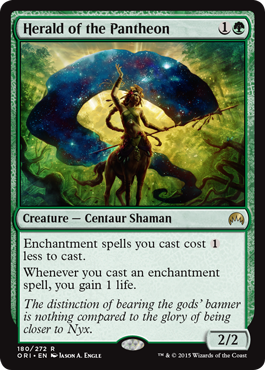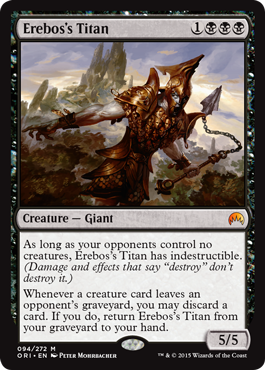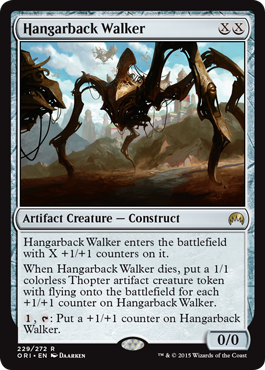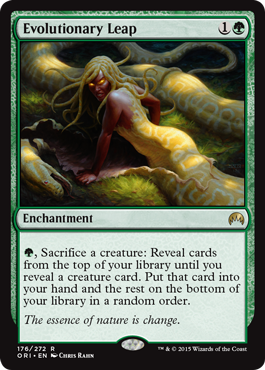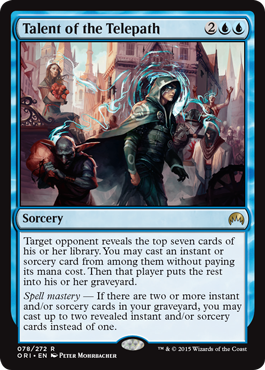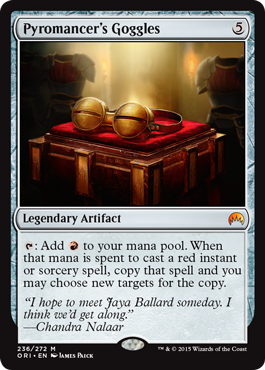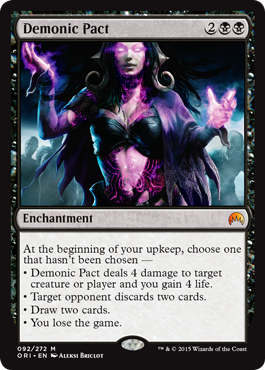By James Chillcott (@MTGCritic)
So far, Magic Origins looks like a triumphant finale for the long-running summer core set of Magic: The Gathering. The final core set (soon to be replaced with the 2nd set in the 2nd block of each season) is chock full of subtle and original cards that many players, both pro and amateur alike, have been having trouble evaluating.
Unlike Dragons of Tarkir, which was widely panned as “for casuals”, only to succeed in shaking up the scene in both Modern and Standard, Magic Origins features a ton of cards that are seemingly powerful, but hard to evaluate, resulting in a mix of both over and under-costed cards currently for sale. Also, like DTK, Origins is up against several previous set’s worth of very, very powerful cards that may preclude many of the new cards from seeing extensive play until the fall rotation in October.
Many of the best cards in Origins have already been identified, and it’s possible that too many are already priced for success. Remember however, that you’re really going to see the greatest returns if you skip the armchair theorizing and buckle down to test the decks ahead of the curve.
Here, presented in order of likely upside, are my picks for the cards in Magic Origins most likely to reward timely speculation, with all target prices assumed to be possible during 2015 unless otherwise noted:
1. Nissa, Vastwood Seer (Mythic)
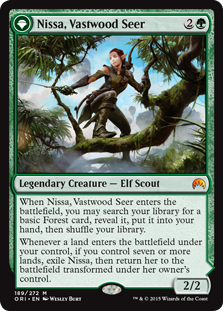
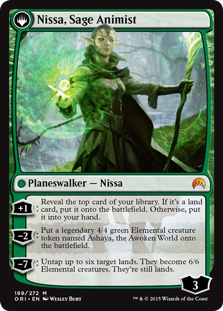
It may seem pretty odd to be calling out the most expensive card in the set as my top underdog pick, but hear me out. Nissa has already been called everything from hot garbage to Elspeth by both pros and MTGFinance writers alike. Personally, I’m with Pat Chapin on this one. I see a very flexible early utility creature that turns into a stellar late game draw once your ramp strategy has activated. I also see an iconic mythic that will likely be played as a 4-of when it’s played at all. The Standard meta is going to get shook up something fierce with the release of Origins, so anything could happen, but if Nissa pops up at top tables in some early Standard tournaments, I can easily see her pushing the upper limits of standard playable mythics. Also, with Eldrazi ramp almost certainly a thing once Battle for Zendikar is released in October, the trend-line would seem to favor the home team. Though her percentage returns wouldn’t be the highest in this list, the raw returns would still be $5-10 per copy, and potentially more in trade, especially if you can snag some at peak supply for under $20.
Now: $26
Target: $35-40
2. Erebos’s Titan (Mythic)

This big black beat-stick may be a bit lower on players’ radar screens than it should be. The triple black casting cost really reduces the number of decks it can be played in, but there are likely still potential homes in Black Devotion or BG Recursion strategies. Sure he’s big and cheap, but his true form is as a multi-faceted control hoser. His conditional indestructibility has the potential to turn off kill cards from decks that don’t have early drops or can’t keep them on the table, and his recursive potential is unlocked by any deck that either a) plans to use Delve (Tasigur, Angler, Treasure Cruise, Dig Through Time) or b) plans to abuse Deathmist Raptor and Den Protector. He also beats Tasigur, Angel of Tithes and Siege Rhino in combat and survives Languish and Stoke the Flames/Exquisite Firecraft. The fact that he is so useful in turning on Erebos, God of the Dead may not end up being a thing, but it’s certainly worth testing to be sure. Between strong kill and Thoughtseize, mono-black certainly has the tools to make a run.
Now: $8.50
Target: $12-15
3. Abbot of Keral Keep (Foil Rare)

Here we have a rare with at least some potential to be as powerful as Snapcaster Mage. Using the Speculator 3000, I see a low casting cost, an aggressive body, and the potential to generate relevant card advantage in a low slung deck streamlined to abuse it. I have little doubt this will see some play in Standard while it’s legal, but in pointing the finger at foils I’m really saying that it might have a home in Modern or Legacy. Picture a deck with Snaps, Young Pyromancer, Delver of Secrets and this guy alongside a pile of 0/1 casting cost spells. StarCityGames is sold out at $9.99 and currently I can’t see many for sale under $20, which is steep without proven results. I’ll be target these around $15 if I can get them, ramping up my commitment quickly if I see tournament results or deck ideas that seem to drive the value.
Now: $13
Target: $50+
4. Evolutionary Leap (Foil Rare)
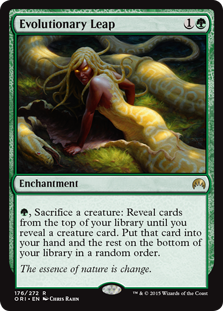
I feel reasonably confident that this is a card that will earn a spike within the next 2-3 years. Is it worth going deep on copies now without results hoping this is the next Collected Company in Modern? Probably not. CoCo is already giving green decks a somewhat similar option whose potential hasn’t been fully plumbed, and there are more reliable options for your hard earned dollars. That being said, this is more combo card (think Polymorph into an important creature off of a token) than a Birthing Pod to my eyes. Perhaps what it really needs to go off is reliable card stacking, a la Congregation at Dawn or Sensei’s Divining Top. It’s the perfect example of a card that most players won’t be able to rate effectively until they’ve seen a smarter player bring it to a top table and since I haven’t divined the proper build for it, this spec comes with a giant sized caution label despite the slight potential to be massive in Modern and/or Legacy.
Now: $15
Target: $30 (don’t hold your breath)
5. Harbinger of the Tides (Foil Rare)
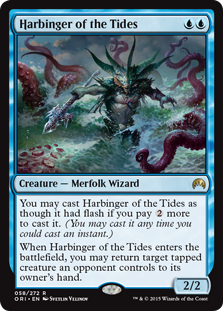
Harbinger of the Tides needs a few things to happen to end up facing the right direction. Firstly, he needs to successfully slot into Modern Merfolk as everyone expects him to, and then put up a strong set of results that demonstrates he takes the deck up a notch. Hopefully, that deck wants four copies, though it’s possible they just don’t have all the slots available. If he could simultaneously find a home as a 3-4 of in a dominant Jeskai tempo strategy in Standard for a few months, that would certainly bode well for hitting the target below. Ideally I’ll be looking to scoop up a few sets under $15, looking to hold for a long term double up.
Now: $18
Target: $30+
6. Demonic Pact (Mythic)
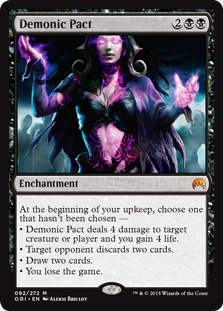
Normally, I would be seeing this as a bulk rare, but the reality is that there are plenty of tools in the current Standard to make this work. With cards like Dromoka’s Command and Silumgar’s Command on deck to make sure you never actually lose the game, both Abzan mid-range and U/B control might be able to find reasons to run this.
My conditions for success here are as follows:
- dominant deck runs 4 copies
- or 2-3 consistent decks run 2-3 copies
- and format stays slow enough for a do nothing 4-drop to matter
I’m also only 75% sure this isn’t playable in Modern or Legacy, since funny ways to donate it to opponents might be found.
Now: $3.75
Target: $7-10
7. Animist’s Awakening (Foil Rare)
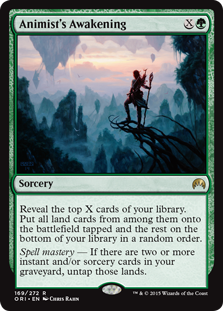
This card has all the hallmarks of a Modern or Legacy card that will be forgotten about until the day the right combination of cards suddenly makes it spike off of a Top 8 performance that comes out of nowhere. You need to be generating a lot of mana already to make it sexy, so it’s really about finding interesting utility lands or lands with auto-win conditions and benefiting from them all coming into play at once. If these dip towards $4, and I think they will, I’ll consider acquiring some to stash away in the long spec box.
Now: $10
Target: $20+ (long term)
Bonus Notes:
- Day’s Undoing foils are over $50 on low supply at present. I’m a believer that someone breaks this in Modern and/or Legacy, likely in some kind of aggro or burn build. If it happens fast, this price will solidify and could climb to $100. If it doesn’t, I’ll be looking to get in on these under $20 with a willingness to wait until it gets snapped in two.
- Hallowed Moonlight foils are carrying a 4x modifier at present on the assumption of Modern and/or Legacy play. I’d like to snag some under $10, which should be possible once we hit peak supply.
- Liliana, Heretical Healer might be playable in Modern. I’m brewing with Athreos and Kitchen Finks at present to try and figure out the right angle.
- Woodland Bellower may end up a big hit, and it may even be modern playable. I’ve got my eye on this guy.
- Several cards in this set are over-priced already if they don’t find a home in a big deck in a hurry. These short-sell targets include: Jace, Vryn’s Prodigy (Foil) at $40+, Chandra, Fire of Kaladesh (Foil) at $40, Day’s Undoing at $14 and Kytheon, Hero of Akros at $14.
So there you have it, the long-shot specs of Magic Origins. Which ones are you going after and why? Anything I missed that you think has a shot at a big rise?
DFD: Dragons of Tarkir Update:
In Digging for Dollars: DTK, I called out the following specs as undervalued cards with some chance of financial success (shown with original and current pricing:
- Dragonlord Ojutai: $4 to $16 (+400%, 700% at peak)
- Sidisi, Undead Vizier: $3 to $1 (-67%)
- Zurgo, Bellstriker: $2 to $2 (0%)
- Stratus, Dancer: $2 to $1 (-50%)
- Surrak, the Hunt Caller: $2 to $0.75 (-62.5%)
- Blood-Chin Fanatic: $1 to .25 (-75%)
- Dragon Tempest: $3.50 to .50 (-85%)
- Boltwing Marauder: $.50 to $.25 (-50%)
- Icefall Regent: $1.50 to $1.25 (-17%)
- Profaner of the Dead: $.50 to $0.25 (-50%)
Dragonlord Ojutai is clearly the big winner here, and the amount of money I made on my 20 or so copies, easily made up for funds invested in 12 copies of Sidisi, Undead Vizier and Zurgo, Bellstriker that haven’t gone anywhere. It’s laughable however, that I set the ceiling on Ojutai at $8, when in hindsight we see one of the defining finishers of the format, and a card that has already seen Modern play. (Having hit $30 earlier in the season, Ojutai now looks like a solid pickup for the fall if decks that want him can figure out how to get around the sacrifice effects that have rendered him less effective.)
The only other cards I offered up as solid picks were Zurgo, Bellstriker and Sidisi, and both saw some good early play before falling off the side of the metagame. That being said, both cards are still positioned reasonably well heading into the fall, though major financial gains will be difficult at this point without top table support. I suspect there may be a GB Recursion strategy that wants a couple of copies of Sidisi at the top end but it won’t be a 4-of unless Battle for Zendikar offers up a powerful ramp strategy to effectively reduce it’s casting cost.
Of the true long shots, none of them have yet managed to hit the targets I set for them should they see widespread play.
The results of DFD: DTK then, provide further proof that buying a full portfolio of long-shot lists like this is nearly always a bad strategy. Cards like Dragon Tempest, Blood-Chin Fanatic and Boltwing Marauder too often hinge on the emergence of a specific linear deck, whereas flexible and powerful cards like Snapcaster Mage and Abrupt Decay offer up multi-format appeal that can be tucked into a myriad of decks.
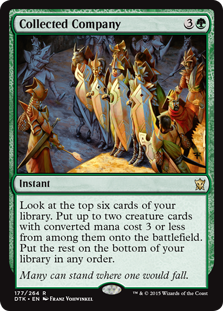
Note: One of my biggest misses from DTK was my complete predictive whiff on the power of Collected Company in Modern and the resulting explosion in the value of CoCo foils. Like everyone else I just saw a poor man’s Birthing Pod at a casting cost that seemed too high for the format. The ability to leverage instant speed status to recover from sweepers, get in under counterspells and occasionally combo off, has however, proven to be extremely powerful. Fortunately, I clued in earlier than most (about a week after publication) and managed to snag 20+ foils around $10-12. Today those foils hover around $40, and I also made strong returns on early acquisitions of Death Mist Raptor and the other Dragonlords, so DTK was a strong win on the spec sheet despite getting stuck holding 3 playsets each of Dragon Tempest and Descent of the Dragons 😉
See you next time and have fun at the pre-release!
James Chillcott is the CEO of ShelfLife.net, The Future of Collecting, Senior Partner at Advoca, a designer, adventurer, toy fanatic and an avid Magic player and collector since 1994.
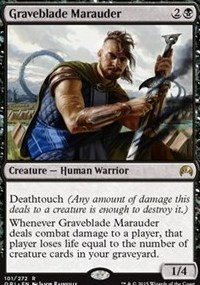 I understand at first glance his stats are underwhelming. What justified his inclusion in this weeks FF can be wrapped up with one word. Deathtouch! Almost any creature in the format would laugh at a 1/4, but deathtouch puts the fear in both Dragonlord Ojutai and Silumgar, the Drifting Death. Though his ability begs to be built around, it’s really not that hard in Standard to put creatures in the graveyard. He even works well with Fleshbag Marauder and Satyr Wayfinder. The only roadblock I can forsee in his future is Deathmist Raptor. The dino’s synergy with Den Protector would be the only leash holding back Standard play. If you couldn’t already tell, this is my favorite card in the set. He’s currently at $1 but is begging to gain value if Deathmist decreases in play.
I understand at first glance his stats are underwhelming. What justified his inclusion in this weeks FF can be wrapped up with one word. Deathtouch! Almost any creature in the format would laugh at a 1/4, but deathtouch puts the fear in both Dragonlord Ojutai and Silumgar, the Drifting Death. Though his ability begs to be built around, it’s really not that hard in Standard to put creatures in the graveyard. He even works well with Fleshbag Marauder and Satyr Wayfinder. The only roadblock I can forsee in his future is Deathmist Raptor. The dino’s synergy with Den Protector would be the only leash holding back Standard play. If you couldn’t already tell, this is my favorite card in the set. He’s currently at $1 but is begging to gain value if Deathmist decreases in play.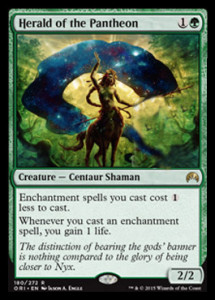 Playable discounted creatures in Golgari: Boon Satyr, Courser of Kruphix, Herald of Torment, Master of the Feast, Nyx Weaver, Spiteful Returned
Playable discounted creatures in Golgari: Boon Satyr, Courser of Kruphix, Herald of Torment, Master of the Feast, Nyx Weaver, Spiteful Returned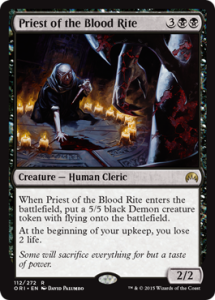 If Satyr Wayfinder isn’t enough fodder for you Sidisi, Undead Vizier or Fleshbag Marauder? I present to you, fodder and a Dragon-destroying Demon token (except Atarka, of course). Unless you’re playing FNM, Encase in Ice is the only ‘Pacifism’ effect in the current competitive Standard meta.
If Satyr Wayfinder isn’t enough fodder for you Sidisi, Undead Vizier or Fleshbag Marauder? I present to you, fodder and a Dragon-destroying Demon token (except Atarka, of course). Unless you’re playing FNM, Encase in Ice is the only ‘Pacifism’ effect in the current competitive Standard meta. This was actually the hardest card for me to add to the list. When it was first spoiled, It seemed way to narrow for my tastes and would end up being a meta call sideboard choice. It’s grown on me the more and more I think about it’s potential. It’s easy to think about when cards are good but will it be good more times than the times it’s bad. The fact that it’s a cantrip takes most of the sting out, but did keeping two mana up on your opponents turn put you behind? Probably not.
This was actually the hardest card for me to add to the list. When it was first spoiled, It seemed way to narrow for my tastes and would end up being a meta call sideboard choice. It’s grown on me the more and more I think about it’s potential. It’s easy to think about when cards are good but will it be good more times than the times it’s bad. The fact that it’s a cantrip takes most of the sting out, but did keeping two mana up on your opponents turn put you behind? Probably not. I can’t help but look at devotion potential when I see this little guy. Grey Merchant of Asphodel (Gary) is one of my favorite cards from Theros block. Bloodsoaked Champion and D-Souls will obviously have great aggressive potential for Mono-Black Aggro, but the ability to bring back creatures to keep devotion high could lead to some explosive turns.
I can’t help but look at devotion potential when I see this little guy. Grey Merchant of Asphodel (Gary) is one of my favorite cards from Theros block. Bloodsoaked Champion and D-Souls will obviously have great aggressive potential for Mono-Black Aggro, but the ability to bring back creatures to keep devotion high could lead to some explosive turns.